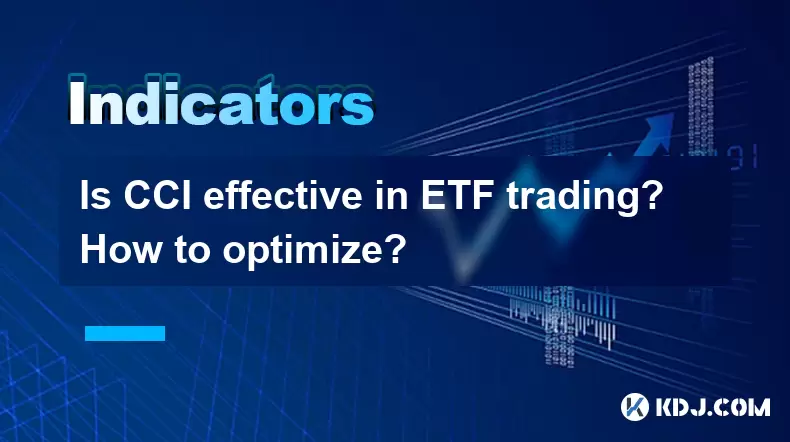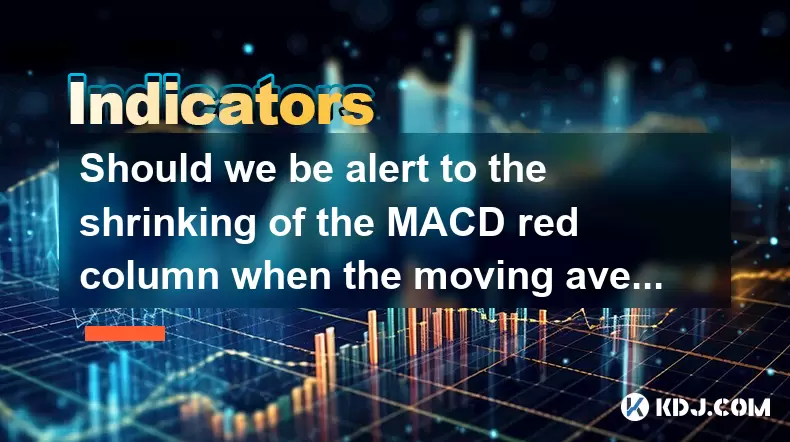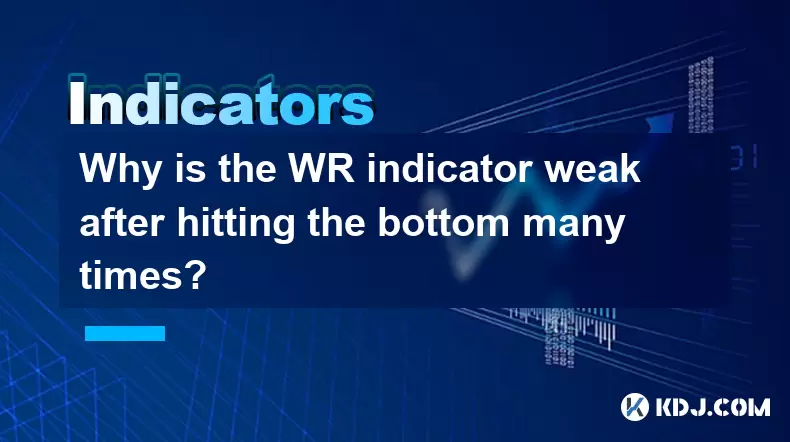-
 Bitcoin
Bitcoin $101,898.5005
-0.75% -
 Ethereum
Ethereum $2,258.1125
-1.07% -
 Tether USDt
Tether USDt $1.0004
0.01% -
 XRP
XRP $2.0178
-2.93% -
 BNB
BNB $624.0243
-1.53% -
 Solana
Solana $134.3298
-0.90% -
 USDC
USDC $0.9999
0.01% -
 TRON
TRON $0.2675
-2.05% -
 Dogecoin
Dogecoin $0.1538
-1.96% -
 Cardano
Cardano $0.5482
-1.11% -
 Hyperliquid
Hyperliquid $35.5636
5.45% -
 Bitcoin Cash
Bitcoin Cash $453.4902
-1.66% -
 Sui
Sui $2.5134
-2.97% -
 UNUS SED LEO
UNUS SED LEO $9.1292
1.77% -
 Chainlink
Chainlink $11.8457
-1.60% -
 Stellar
Stellar $0.2312
-2.73% -
 Avalanche
Avalanche $16.9721
0.29% -
 Toncoin
Toncoin $2.7549
-3.82% -
 Shiba Inu
Shiba Inu $0.0...01081
-1.10% -
 Litecoin
Litecoin $80.8250
-0.71% -
 Hedera
Hedera $0.1374
0.21% -
 Monero
Monero $305.4827
-2.36% -
 Ethena USDe
Ethena USDe $1.0006
0.00% -
 Dai
Dai $1.0000
-0.01% -
 Polkadot
Polkadot $3.2085
-3.12% -
 Bitget Token
Bitget Token $4.0845
-3.13% -
 Uniswap
Uniswap $6.3353
-1.63% -
 Pi
Pi $0.5085
-0.70% -
 Pepe
Pepe $0.0...08913
-3.82% -
 Aave
Aave $232.7090
-0.58%
Is CCI effective in ETF trading? How to optimize?
CCI helps identify trends and overbought/oversold conditions in ETF trading, with effectiveness varying by market conditions and trader skill; optimization involves adjusting periods and combining with other indicators.
May 23, 2025 at 11:36 am

The Commodity Channel Index (CCI) is a versatile technical indicator that traders use across various markets, including ETFs (Exchange-Traded Funds). Understanding whether CCI is effective in ETF trading and how to optimize its use is crucial for traders looking to enhance their strategies. In this article, we will delve into the effectiveness of CCI in ETF trading, explore its application, and discuss optimization techniques.
Understanding CCI and Its Application in ETF Trading
The Commodity Channel Index (CCI) is a momentum-based oscillator used to identify cyclical trends in a security's price. Developed by Donald Lambert, the CCI measures the variation of a security's price from its statistical mean. In the context of ETF trading, CCI can help traders identify overbought and oversold conditions, potential trend reversals, and breakout opportunities.
To apply CCI in ETF trading, traders typically use the following steps:
- Select an ETF: Choose an ETF that aligns with your trading strategy. ETFs can range from broad market indices to sector-specific funds.
- Set up the CCI Indicator: Most trading platforms allow you to add CCI to your chart. The default setting for CCI is usually 20 periods, but this can be adjusted based on your trading style.
- Interpret CCI Signals: CCI values above +100 indicate overbought conditions, while values below -100 suggest oversold conditions. Traders often look for CCI to cross these thresholds to initiate trades.
Effectiveness of CCI in ETF Trading
The effectiveness of CCI in ETF trading can vary depending on several factors, including market conditions, the specific ETF being traded, and the trader's skill level. Here are some key points to consider:
- Trend Identification: CCI is particularly effective in identifying trends in ETFs. When the CCI remains above +100, it may indicate a strong uptrend, while values consistently below -100 can signal a downtrend.
- Volatility: ETFs that exhibit higher volatility may produce more frequent CCI signals, which can be both an advantage and a challenge. Traders need to be cautious of false signals in highly volatile markets.
- Time Frame: The effectiveness of CCI can vary across different time frames. Short-term traders might find CCI more useful on shorter time frames like 5-minute or 15-minute charts, while long-term investors may prefer daily or weekly charts.
Optimizing CCI for ETF Trading
To optimize CCI for ETF trading, traders can employ several strategies to enhance their trading performance. Here are some optimization techniques:
- Adjusting the Period: The default 20-period setting for CCI can be adjusted to suit different trading styles. A shorter period (e.g., 10 periods) can make CCI more sensitive to price changes, while a longer period (e.g., 30 periods) can smooth out the indicator and reduce false signals.
- Combining with Other Indicators: Using CCI in conjunction with other technical indicators can improve its effectiveness. For example, combining CCI with moving averages or the Relative Strength Index (RSI) can provide more robust trading signals.
- Setting Thresholds: Instead of relying solely on the standard +100 and -100 thresholds, traders can experiment with different levels to find what works best for their specific ETF. For instance, some traders might use +120 and -120 as their overbought and oversold thresholds.
Practical Example of Using CCI in ETF Trading
Let's consider a practical example of how to use CCI in trading an ETF, such as the SPDR S&P 500 ETF (SPY).
- Open your trading platform and select SPY as your trading instrument.
- Add the CCI indicator to your chart. Set the period to 20, which is the default setting.
- Monitor the CCI values: If the CCI crosses above +100, it might be a signal to consider a long position, as the ETF could be entering an overbought condition. Conversely, if the CCI falls below -100, it might be a signal to consider a short position or exit a long position, as the ETF could be entering an oversold condition.
- Combine with other indicators: For added confirmation, you might add a 50-day moving average to your chart. If the CCI crosses above +100 and the price is above the 50-day moving average, it could reinforce a bullish signal.
Risk Management and CCI
Risk management is a critical aspect of using CCI in ETF trading. Here are some strategies to manage risks effectively:
- Stop-Loss Orders: Always use stop-loss orders to limit potential losses. For example, if you enter a long position when the CCI crosses above +100, set a stop-loss order below a recent low.
- Position Sizing: Adjust your position size based on the volatility of the ETF and your overall risk tolerance. More volatile ETFs may require smaller position sizes.
- Diversification: Do not rely solely on CCI for all your trades. Diversify your trading strategies and instruments to spread risk.
Backtesting CCI Strategies
Backtesting is an essential step in optimizing CCI strategies for ETF trading. Here's how to conduct a backtest:
- Select a Historical Period: Choose a period that reflects the market conditions you expect to trade in. For instance, you might select the past year of data for SPY.
- Define Your Strategy: Clearly outline your entry and exit rules based on CCI signals. For example, enter a long position when CCI crosses above +100 and exit when it falls below +100.
- Use Backtesting Software: Many trading platforms and software solutions offer backtesting capabilities. Input your strategy and historical data into the software.
- Analyze Results: Review the backtest results to assess the strategy's performance. Look at metrics such as win rate, average profit/loss, and drawdown to gauge effectiveness.
Frequently Asked Questions
Q1: Can CCI be used for all types of ETFs, including sector-specific funds?
A1: Yes, CCI can be applied to any ETF, including sector-specific funds. However, the effectiveness may vary based on the ETF's volatility and market conditions. It's important to backtest your strategy on the specific ETF you plan to trade.
Q2: How often should I adjust the CCI settings for different ETFs?
A2: The frequency of adjusting CCI settings depends on your trading style and the performance of your current settings. Some traders might adjust settings weekly or monthly, while others might do so after a significant change in market conditions. Regular backtesting can help determine when adjustments are needed.
Q3: Is CCI more effective for short-term or long-term ETF trading?
A3: CCI can be effective for both short-term and long-term ETF trading, but its performance can vary. Short-term traders might find CCI more useful on shorter time frames due to its sensitivity to price changes, while long-term investors might use it on daily or weekly charts to identify broader trends.
Q4: Can CCI be used in conjunction with fundamental analysis for ETF trading?
A4: Yes, CCI can be used alongside fundamental analysis to enhance your ETF trading strategy. While CCI provides technical signals, fundamental analysis can offer insights into the ETF's underlying assets and market conditions, providing a more comprehensive approach to trading.
Disclaimer:info@kdj.com
The information provided is not trading advice. kdj.com does not assume any responsibility for any investments made based on the information provided in this article. Cryptocurrencies are highly volatile and it is highly recommended that you invest with caution after thorough research!
If you believe that the content used on this website infringes your copyright, please contact us immediately (info@kdj.com) and we will delete it promptly.
- DOGE Recovery Amid US-Iran Tensions: A Market Rollercoaster
- 2025-06-23 20:45:13
- Fiserv, PayPal, and Stablecoins: A New Era of Interoperability?
- 2025-06-23 20:45:13
- Hacken Token's Wild Ride: Minting Exploit and the Cryptocurrency Crash
- 2025-06-23 21:05:12
- Dogecoin, Cloud Mining, and Blockchain: A Meme's Evolution
- 2025-06-23 21:25:12
- Layer 1 Turmoil: CEO Ousted Amidst Scam Allegations
- 2025-06-23 21:05:12
- Solana's Stumble: Price Crash and Network Exodus?
- 2025-06-23 21:25:12
Related knowledge

What is the significance of the gap formed by the gap opening not being filled within five days?
Jun 23,2025 at 09:42pm
Understanding Gaps in Cryptocurrency TradingIn the world of cryptocurrency trading, a gap refers to a situation where the price of an asset jumps from one level to another without any trading activity occurring between those two levels. This often happens over weekends or holidays when the market is closed, and significant news or events occur that impa...

Does the second golden cross of MACD above the zero axis represent the continuation of strength?
Jun 23,2025 at 08:21pm
Understanding the MACD IndicatorThe Moving Average Convergence Divergence (MACD) is a widely used technical analysis tool in cryptocurrency trading. It consists of three main components: the MACD line, the signal line, and the histogram. The MACD line is calculated by subtracting the 26-period Exponential Moving Average (EMA) from the 12-period EMA. The...

Is it effective when the DIF line suddenly crosses the zero axis when the volume is shrinking and the market is trading sideways?
Jun 23,2025 at 07:29pm
Understanding the DIF Line in Technical AnalysisThe DIF line, or the Difference Line, is a critical component of the MACD (Moving Average Convergence Divergence) indicator, widely used in technical analysis across cryptocurrency and traditional financial markets. It represents the difference between the 12-period EMA (Exponential Moving Average) and the...

Should we be alert to the shrinking of the MACD red column when the moving average is arranged in a bullish pattern?
Jun 23,2025 at 08:14pm
Understanding the MACD Red Column and Its SignificanceThe Moving Average Convergence Divergence (MACD) is a widely used technical indicator in cryptocurrency trading. It consists of three main components: the MACD line, the signal line, and the MACD histogram (the red column). The red column represents the difference between the MACD line and the signal...

Why is the WR indicator weak after hitting the bottom many times?
Jun 23,2025 at 07:56pm
Understanding the WR Indicator in Cryptocurrency TradingThe Williams %R (WR) indicator is a momentum oscillator used by traders to identify overbought and oversold levels in the market. It ranges from 0 to -100, with readings above -20 considered overbought and below -80 considered oversold. In the context of cryptocurrency trading, where volatility is ...

Is the shrinking cross star after the historical high a signal of topping?
Jun 23,2025 at 05:56pm
Understanding the Shrinking Cross Star PatternIn technical analysis, candlestick patterns are essential tools for traders to predict potential price movements. One such pattern is the shrinking cross star, which appears as a small-bodied candle with long upper and lower shadows, indicating indecision in the market. When this pattern forms after an asset...

What is the significance of the gap formed by the gap opening not being filled within five days?
Jun 23,2025 at 09:42pm
Understanding Gaps in Cryptocurrency TradingIn the world of cryptocurrency trading, a gap refers to a situation where the price of an asset jumps from one level to another without any trading activity occurring between those two levels. This often happens over weekends or holidays when the market is closed, and significant news or events occur that impa...

Does the second golden cross of MACD above the zero axis represent the continuation of strength?
Jun 23,2025 at 08:21pm
Understanding the MACD IndicatorThe Moving Average Convergence Divergence (MACD) is a widely used technical analysis tool in cryptocurrency trading. It consists of three main components: the MACD line, the signal line, and the histogram. The MACD line is calculated by subtracting the 26-period Exponential Moving Average (EMA) from the 12-period EMA. The...

Is it effective when the DIF line suddenly crosses the zero axis when the volume is shrinking and the market is trading sideways?
Jun 23,2025 at 07:29pm
Understanding the DIF Line in Technical AnalysisThe DIF line, or the Difference Line, is a critical component of the MACD (Moving Average Convergence Divergence) indicator, widely used in technical analysis across cryptocurrency and traditional financial markets. It represents the difference between the 12-period EMA (Exponential Moving Average) and the...

Should we be alert to the shrinking of the MACD red column when the moving average is arranged in a bullish pattern?
Jun 23,2025 at 08:14pm
Understanding the MACD Red Column and Its SignificanceThe Moving Average Convergence Divergence (MACD) is a widely used technical indicator in cryptocurrency trading. It consists of three main components: the MACD line, the signal line, and the MACD histogram (the red column). The red column represents the difference between the MACD line and the signal...

Why is the WR indicator weak after hitting the bottom many times?
Jun 23,2025 at 07:56pm
Understanding the WR Indicator in Cryptocurrency TradingThe Williams %R (WR) indicator is a momentum oscillator used by traders to identify overbought and oversold levels in the market. It ranges from 0 to -100, with readings above -20 considered overbought and below -80 considered oversold. In the context of cryptocurrency trading, where volatility is ...

Is the shrinking cross star after the historical high a signal of topping?
Jun 23,2025 at 05:56pm
Understanding the Shrinking Cross Star PatternIn technical analysis, candlestick patterns are essential tools for traders to predict potential price movements. One such pattern is the shrinking cross star, which appears as a small-bodied candle with long upper and lower shadows, indicating indecision in the market. When this pattern forms after an asset...
See all articles
























































































